王树森Transformer学习笔记
Transformer
Transformer是完全由Attention和Self-Attention结构搭建的深度神经网络结构。

其中最为重要的就是Attention和Self-Attention结构。
Attention结构
Attention Layer接收两个输入\(X = [x_1, x_2, x_3, ..., x_m]\),Decoder的输入为 \(X' = [x_1^{'}, x_2^{'}, x_3^{'}, ...,x_t^{'}]\),得到一个输出\(C = [c_1, c_2, c_3, ..., c_t]\),包含三个参数:\(W_Q, W_K, W_V\)。
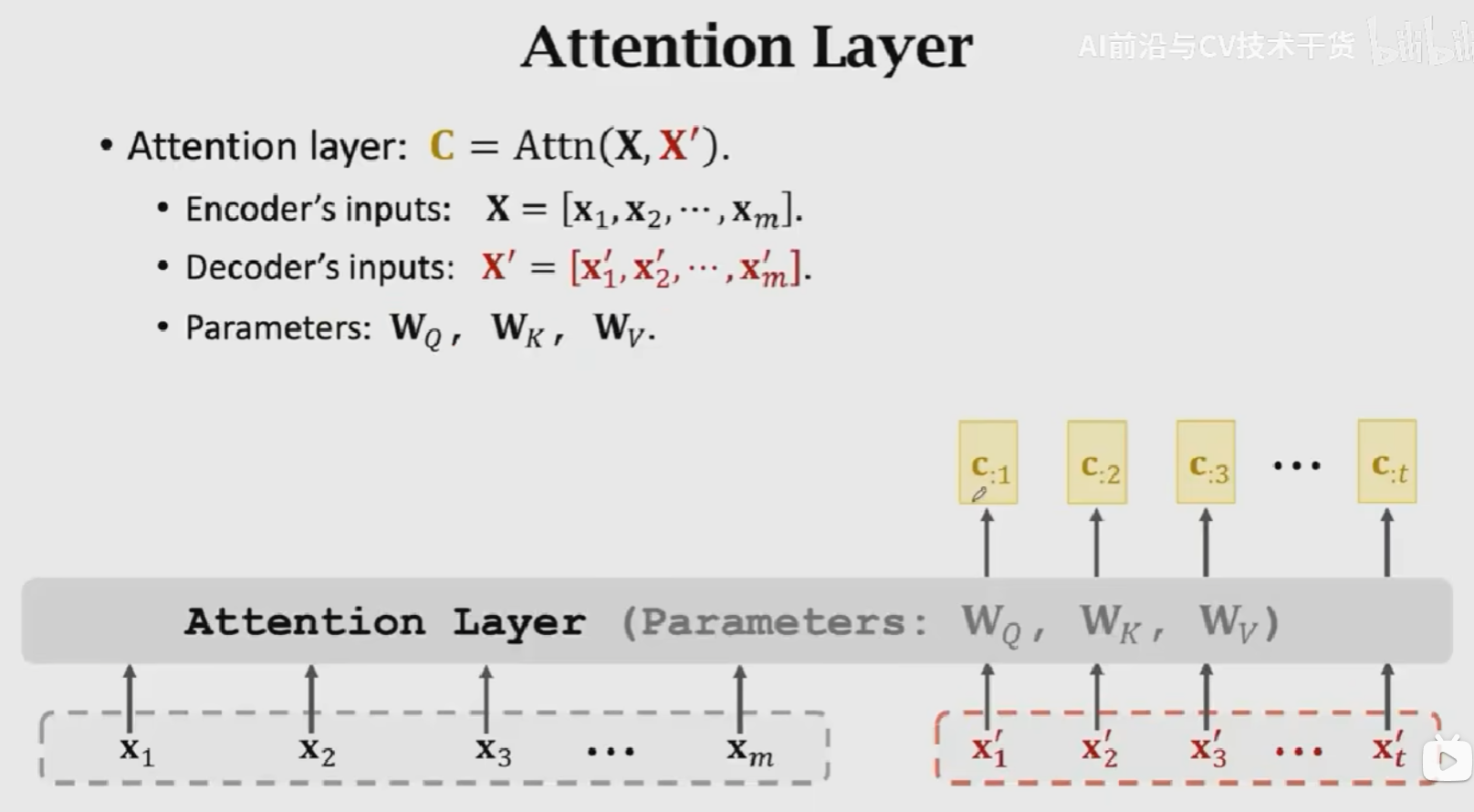
具体的计算流程为:
- 首先,使用Encoder的输入来计算Key和Value向量,得到m个k向量和v向量:\(k_{:i} = W_Kx_{:i}, v_{:i} = W_vx_{:i}\)
- 然后,对Decoder的输入做线性变换,得到t个q向量:\(q_{:j} = W_Qx_{:j}^{'}\)
- 计算权重:\(\alpha_{:1} = Softmax(K^Tq_{:1})\)
- 计算Context vector:\(c_{:1} = \alpha_{11}v_{:1} + \alpha_{21}v_{:2} + ...\alpha_{m1}v_{:m} = V\alpha_{:1} = VSoftmax(K^Tq_{:1})\)
- 用相同的方式计算\(c_2, c_3, ..., c_t\),得到\(C = [c_1, c_2, ..., c_t]\)
Key:表示待匹配的值,Query表示查找值,这m个\(\alpha_{:j}\)就说明是query(\(q_j\))和所有key(\([k_{:1}, k_{:2}, ..., k_{:m}]\))之间的匹配程度。匹配程度越高,权重越大。V是对输入的一个线性变化,使用权重对其进行加权平均得到相关矩阵\(C\)。在Attention+RNN的结构中,是对输入状态进行加权平均,这里\(V\)相当于对\([h_1, h_2, ..., h_m]\)进行线性变换。
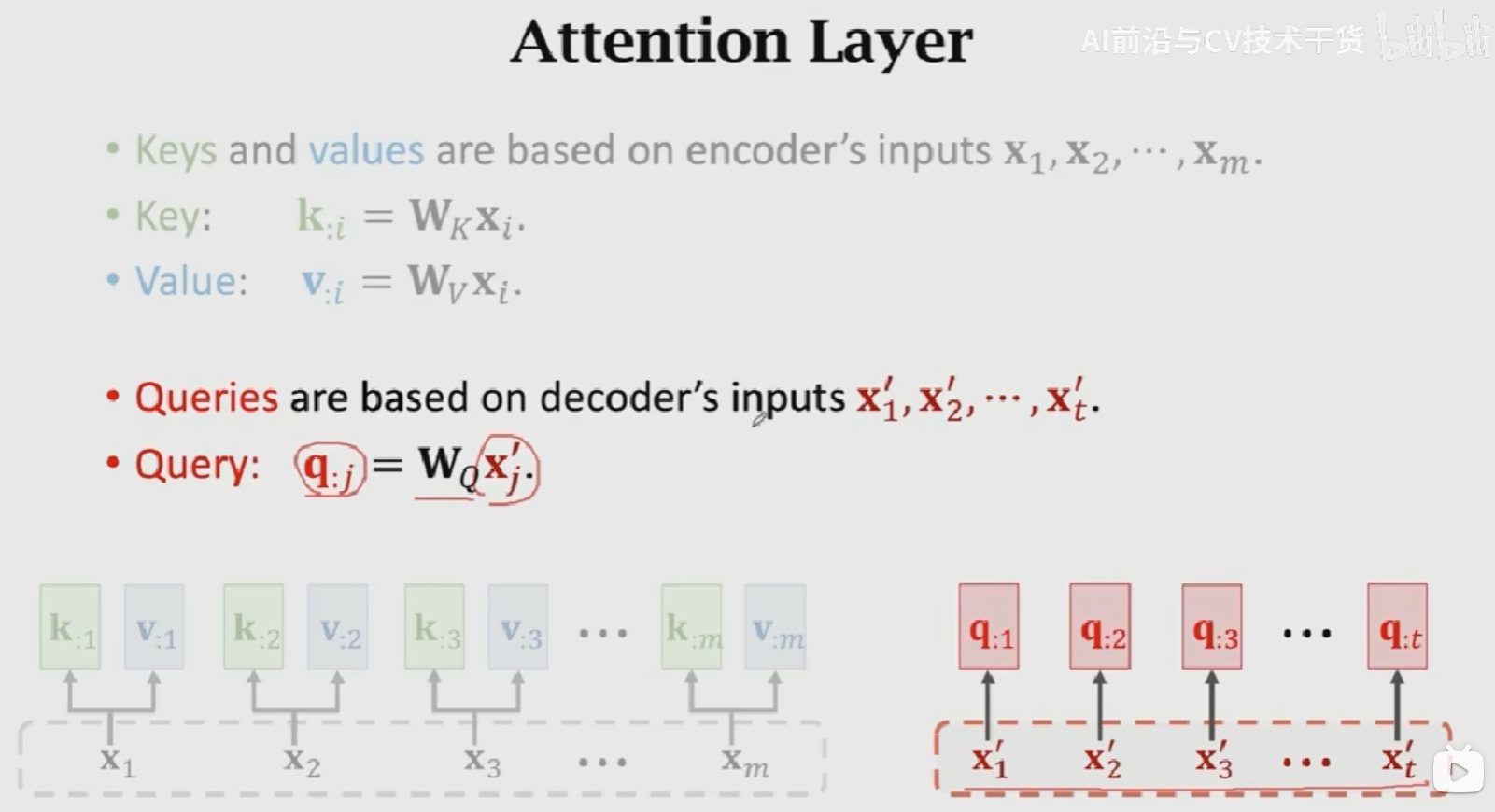
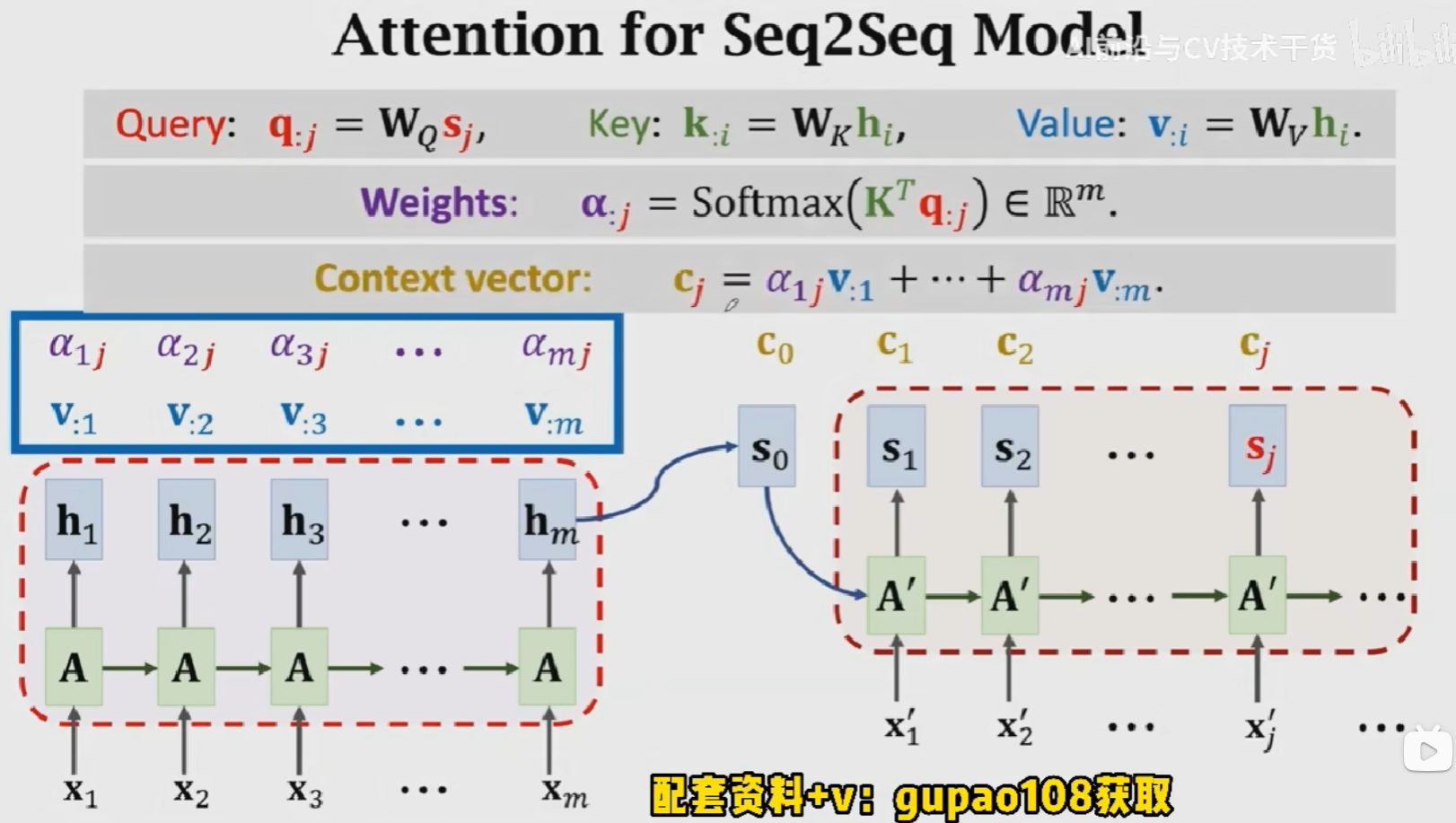
Self-Attention结构
Attention结构接收两个输入得到一个输出,Self-Attention结构接收一个输入得到一个输出,如下图所示。中间的计算过程与Attention完全一致。
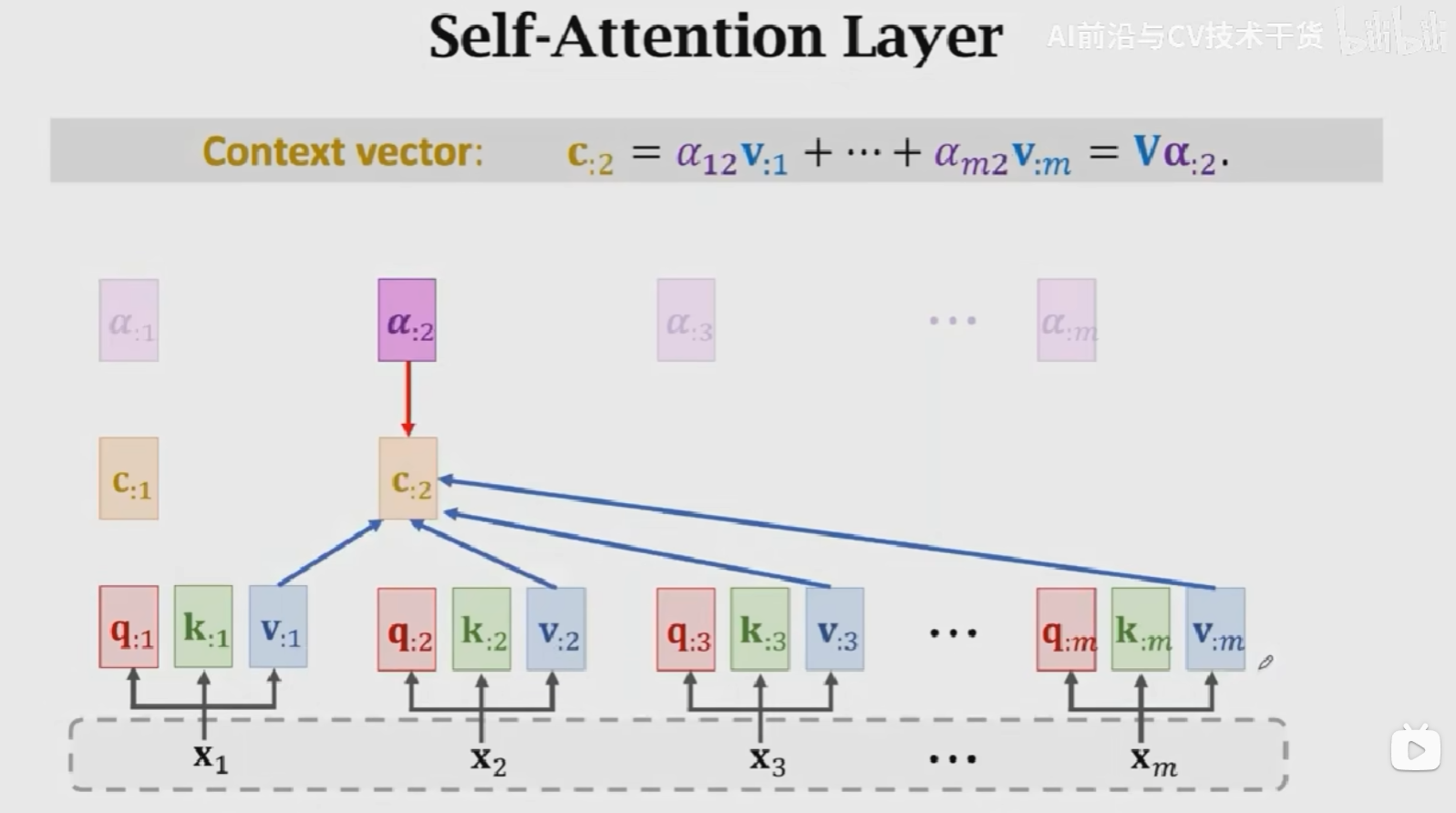
Multi-head Self-Attention
上述的Self-Attention结构被称为单头Self-Attention(Single-Head Self-Attention)结构,Multi-Head Self-Attention就是将多个Single-Head Self-Attention的结构进行堆叠,结果Concatenate到一块儿。
假如有\(l\)个Single-Head Self-Attention组成一个Multi-Head Self-Attention,Single-Head Self-Attention的输入为\(X = [x_{:1}, x_{:2}, x_{:3}, ..., x_{:m}]\),输出为\(C = [c_{:1}, c_{:2}, c_{:3}, ..., c_{:m}]\)维度为\(dm\),
则,Multi-Head Self-Attention的输出维度为\((ld)*m\),参数量为\(l\)个\(W_Q, W_K, W_V\)即\(3l\)个参数矩阵。
Multi-Head Attention操作一致,就是进行多次相同的操作,将结果Concatenate到一块儿。
BERT:Bidirectional Encoder Representations from Transformers
BERT的提出是为了预训练Transformer的Encoder网络【BERT[4] is for pre-training Transformer's[3] encoder.】,通过两个任务(1)预测被遮挡的单词(2)预测下一个句子,这两个任务不需要人工标注数据,从而达到使用海量数据训练超级大模型的目的。
BERT有两种任务:
- Task 1: Predict the masked word,预测被遮挡的单词
输入:the [MASK] sat on the mat
groundTruth:cat
损失函数:交叉熵损失
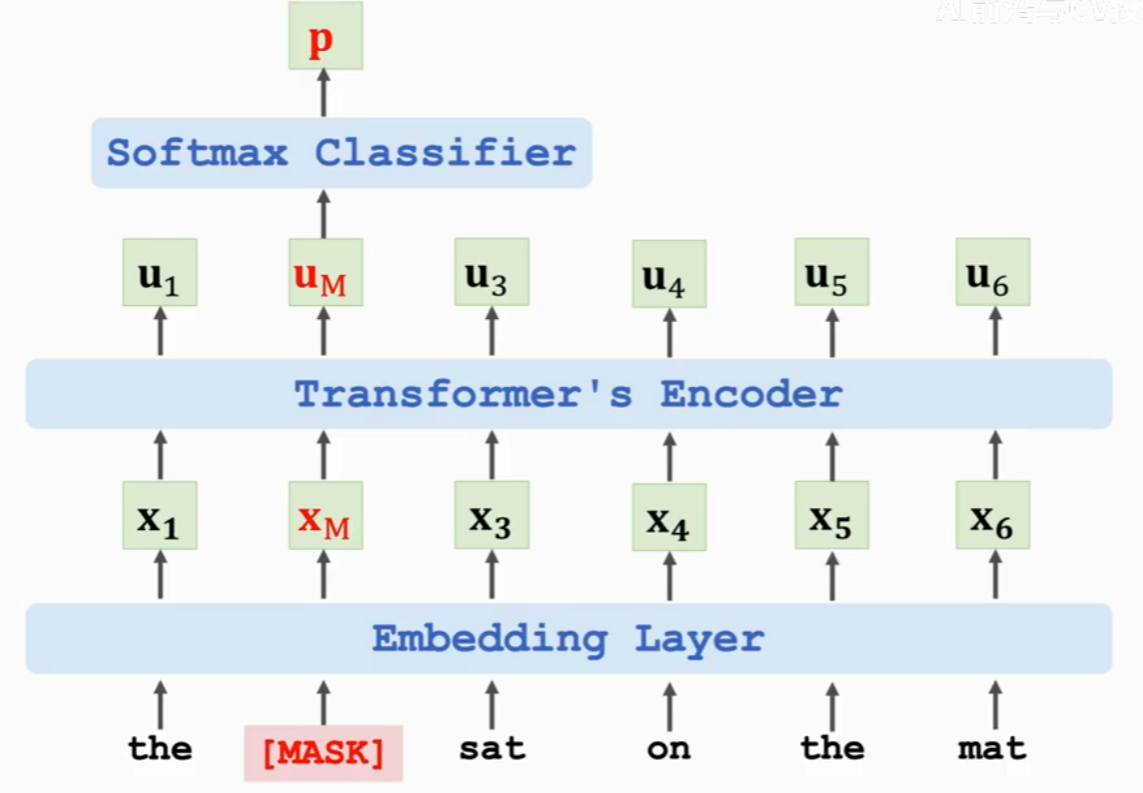
- Task 2: Predict the next sentence,预测下一个句子,判断两句话在文中是否真实相邻
输入:[CLS, first sentence, SEP, second sentence]
输出:true or false
损失函数:交叉熵损失
这样做二分类可以让Encoder学习并强化句子之间的相关性。
好处:
- BERT does not need manually labeled data. (Nice, Manual labeling is expensive.)
- Use large-scale data, e.g., English Wikipedia (2.5 billion words)
- task 1: Randomly mask works(with some tricks)
- task 2: 50% of the next sentences are real. (the other 50% are fake.)
- BERT将上述两个任务结合起来预训练Transformer模型
- 想法简单且非常有效
消耗极大【普通人玩不起,但是BERT训练出来的模型参数是公开的,可以拿来使用】:
- BERT Base
- 110M parameters
- 16 TPUs, 4 days of training
- BERT Large
- 235M parameters
- 64 TPUs, 4days of training
Summary
Transformer:
- Transformer is a Seq2Seq model, it has an encoder and a decoder
- Transformer model is not RNN
- Transfomer is purely based on attention and dense layers(全连接层)
- Transformer outperforms all the state-of-the-art RNN models
Attention的发展:
- Attention was originally developed for Seq2Seq RNN models[1].
- Self-Attention: attention for all the RNN models(not necessarily for Seq2Seq models)[2].
- Attention can be used without RNN[3].
Reference
王树森的Transformer模型
[1] Bahdanau, Cho, & Bengio, Neural machine translation by jointly learning to align and translate. In ICLR, 2015.
[2] Cheng, Dong, & Lapata. Long Short-Term Memory-Networks for Machine Reading. In EMNLP, 2016.
[3] Vaswani et al. Attention Is All You Need. In NIPS, 2017.
[4] Devlin, Chang, Lee, and Toutanova. BERT: Pre-training of deep bidirectional transformers for language understanding. In ACL, 2019.

